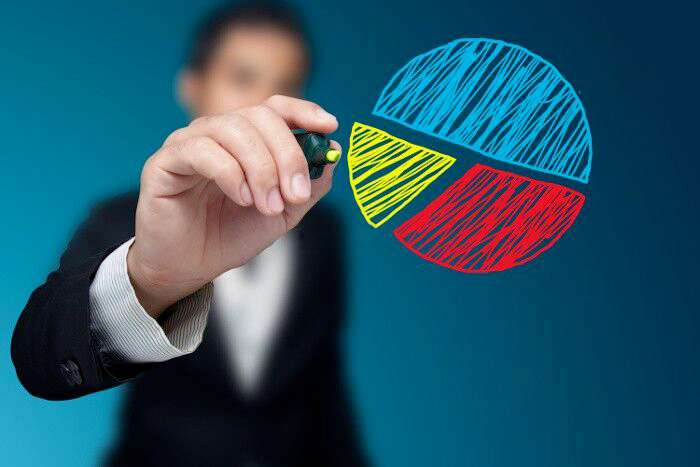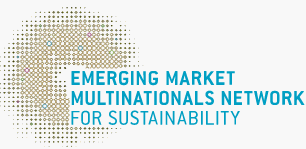Corporate climate risk management: challenges and suggestions
2022-10-27未知GoldenBee0

Climate change may pose a major risk to the global economy and have a major impact on the sustainable corporate development. In recent years, governments, regulators and industry organizations have issued a series of guidelines or regulations on climate and environmental risk stress testing. More and more investors also hope to obtain information about the measures and performance of enterprises in coping with climate change, and favor enterprises that actively promote climate risk management to reduce the risk of long-term investment.
Especially in the context of “30·60” decarbonization commitment, the pressure of business transformation is gradually increasing, and enterprises’ response measures to environmental and climate risks are gradually developing from simple passive information disclosure to active climate risk monitoring and management.
However, climate and environmental risks have unique characteristics different from traditional financial risks. Topics such as how to quantitatively assess and reflect the potential risks of enterprises under the possible development scenarios of climate change, how to design and evaluate strategies for the transition to a low-carbon economy etc., are becoming the focus for enterprises and investors in recent years.
As the essential tool to assess climate and environment risk, climate and environmental risk stress testing by simulating various possible extreme scenarios, can provide proactive scenario analysis and evaluation results, analysis of risk exposure, forecast the potential risk and loss, and convert the cognition of climate science to assessment of potential physical and financial losses. It can not only support the capital market to promote the green development of the business community through ESG management, but also support enterprises to manage their own financial risk exposure. It is also one of the important tools to formulate and implement the action strategy towards “30·60” decarbonization goal.
Four steps
Scenario analysis is a multi-scenario setting and analysis method that, given a set of assumptions and constraints, evaluates a series of hypothetical results by considering various possible future conditions (scenarios), suitable for medium-to-long-term risks, or those with uncertain impact time, and complex and difficult to assess.
Stress testing is a risk management tool used to assess the potential impact of specific events or changes in financial variables on enterprises. It can quantify the impact of extreme situations or major emergencies, and aims to test the threshold of risk tolerance under extreme scenarios. In climate and environmental risk management, stress testing can reflect the vulnerability of financial institutions or financial markets to risk tolerance.
Scenario analysis and stress testing are very suitable for climate and environmental risk assessment and management. Generally, you can follow the following steps:
1. Input indicators and set up analysis scenarios
The setting of risk stress testing scenarios for climate and environmental risks can be formed by different combinations of assigned values of multiple dimension parameters.
It is usually assumed that the scenario setting will include a benchmark scenario and several stress scenarios of different degrees. The baseline scenario refers to the reference scenario without the interference of additional factors, and the stress scenario reflects the changes under different degrees of external shocks.
Common scenarios are often set up with full consideration of policy requirements, economic transitions and climate risks. The changes of different scenarios are taken as the output of the underlying models in the form of quantitative indicators, and the influence of the socio-economic variables output by these models on the key drivers of the financial status of enterprises from different sectors is evaluated.
2. Clarify risk transmission mechanism and establish a conduction & evaluation model
After setting the scenarios and stress testing targets, a climate and environmental risk transmission model should be constructed according to the real situation.
In most cases, climate and environment-related risks are the drivers of existing risks, and the path from climate and environmental risks to corporate financial risks is the focus to be analyzed based on existing theories and experience.
Building the transmission and evaluation model can be divided into two steps:
The first step is to build a climate and environment-economic model, which assesses the financial impact of climate and environmental risks, and outputs financial indicators adjusted by various climate and environmental risk factors; the second step is to set a financial risk model, which takes the company's financial indicators after adjustment as model inputs, evaluates the corresponding financial risk situations and outputs financial risk measurement indicators.
3. Test, calibrate, and analyze results
After the corresponding test data of each scenario in the model is collected, the stress testing will be implemented based on the risk conduction model, and output the test results.
Calibration will be based on internal data sources and existing technical capabilities, and changes in the selected industry can be verified from existing data in different climate scenarios, or through expert consultations.
After completing the calibration verification, the potential impact of the climate and environmental risks in the test on the business will be analyzed to support the corresponding mitigation measures to reduce the exposure of the business to climate and environmental risks, such as optimizing the disclosure and management of environmental risk information, and planning a reasonable emission reduction and decarbonization path in the main business.
4. Disclose information on corporate governance and response to climate risks
After the entire implementation of the stress tests to address climate-related risks is completed, the situation should be documented and reported to the board and senior management before disclosing to regulators.
Enterprises should also clarify the extent to which the expected climate-related risk stress testing process and results will be disclosed, as well as how the relevant information will be disclosed, such as through ESG reports, or through specific non-financial reports (environmental reports, carbon reduction reports, etc.), or small-scale disclosure only for external stakeholders such as investors.
Three challenges
Under the macro background of global climate governance and the role of various driving forces, climate and environmental risk management has increasingly become a key task that enterprises need to pay attention to and implement.
However, the stress testing for climate risk is still in the exploratory stage, and methods also varies for different industries and sizes of enterprises.
First, data related to climate risks are less available and accurate.
These data are mainly used to describe the environmental risk exposure of enterprises, financial and non-financial data, environmental and climatic changes, and the sensitivity analysis of various financial indicators to the environment and climate changes.
At present, a systematic disclosure guidance policy on these data indicators has not been formed; the degree and quality of data collection and disclosure by different enterprises are uneven, and the degree of standardization is low. As a result, the monitoring, processing and use of data are facing big challenges.
Second, enterprises do not have enough awareness of the necessity and importance of climate and environmental stress testing, and have limited investment in human, financial and physical resources in this field.
Climate risk analysis is interdisciplinary and industrial economic-related, requiring a professional analytical research team to do the systematic and continuous research from the establishment of the underlying logic and analysis to the results and conclusion.
Finally, the overall complexity of the stress testing is high; the model construction is difficult, and the results are significantly affected by parameter adjustment.
Climate risk stress testing takes into account the dynamic cross-cutting effects between macroeconomics, climate change, industry policies and corporate transformation. Scenario assumptions based on current cognition and scenarios for the future have greater uncertainty in prediction, and subtle differences in the setting of different models or the same model parameters may yield largely different results.
Therefore, at present, most of the environmental stress testing carried out by enterprises are limited to the basis of traditional risk assessment tools, or only based on qualitative analysis results to obtain policy recommendations.
Four Action Proposals
Climate and environmental risk management is a systematic work with strong professionalism and wide coverage. It needs to be prepared as soon as possible and promoted step by step in order to help enterprises effectively manage and control risks in climate and environment.
To this end, the following suggestions can be considered:
1. Cognition constructing
To achieve the climate goal is an arduous task and requires an overhaul in economic structure. If preparations for economic transformation are inadequate, the huge emission reduction pressure is likely to pack a big punch on consumption and investment in the next few years.
Climate change is probably becoming the main factor affecting the operation and financial stability of enterprises. Enterprises’ management on climate-related risks is not only necessary for their own revenues and stable operation, but also a key part for China to move towards "30·60" Decarbonization Goal and contribute to global climate governance.
2. Capacity building
Enterprises should take immediate actions: match sufficient internal and external resources, build a data acquisition and management system, learn from mature methodologies and test the applicability of the model in multiple dimensions.
Enterprises can start stress testing pilot work from key high-risk industries, explore applicable methods and model tools, form a “pilot-evaluation-feedback-improvement” mechanism, and gradually expand the scope and improving the asset coverage rate.
3. Supervision and restriction
The self-regulatory organizations in different industries shall give periodical guidance and normative restriction to enterprises, urging them to conduct environmental stress testing, and stimulate new drivers of economic growth.
For example, in the financial industry, the Asset Management Association of China (AMAC) has formulated Green Investment Guidelines (For Trial Implementation) to facilitate the implementation of green investment and ESG investment. AMAC has also encouraged and guided the financial industry to make ESG investment through training courses, having a positive impact in the industry.
4. More efforts on R&D
Think tanks and other external institutions should strive to enrich the types of environmental risks of stress testing, improve its empirical models and methodologies by rational use of emerging technologies such as big data and cloud computing, optimize the climate and environmental risk assessment process, build a comprehensive climate and environmental database, and give better play to the role of think tanks for information sharing and resource empowerment.
Best Practices
- The 100-year brand — Air Liquide also has a sense of juvenile
- Beijing Public Transportation Corporation: Developing green transportation to build a harmonious and livable capital
- CGN: Building a modern factory in barren deserts and developing a new win-win cooperation model along “Belt and Road”
Upcoming Event

All the materials on the site “Source: XXX (not from this site)” have been reprinted from other media. They do not imply the agreement by the site.
All the materials with “Source: CSR-China Website” are the copyright of CSR-China Website. None of them may be used in any form or by any means without permission from CSR-China Website.
GoldenBee Official WeChat
Copyright © Csr-china.net All Right Reserved.
京ICP备19010813号










